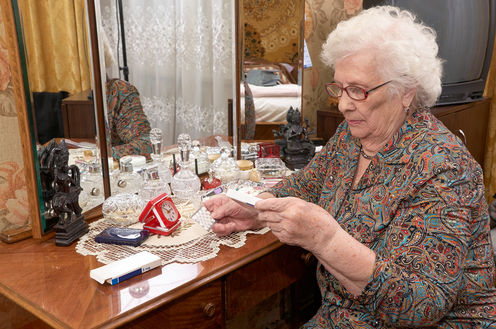
The word “generic” is derived from the Latin “genus” which means “kind” or “class”. For medicines, it was originally used to describe the active chemical ingredient of a drug, in lieu of the scientific name, which is often difficult to remember and pronounce.
Over time, this definition has broadened to include additional brands of existing medicines.
Researching, developing and bringing a medicine to market is a costly process and now exceeds US$2.6 billion. Pharmaceutical companies are given a patent period of 20 years, including time for clinical trials, where they have exclusive marketing rights to recoup their investment.
After the patent period, another company can produce the same medicine under a different brand name. These usually (but not always) less expensive brands have become known as the “generics”.
Ingredients
Generic medicine contains the same active ingredient in the same dose as the original brand.
As well as the name on the bottle or the box, the inactive ingredients – so-called excipients – may differ. These are needed in the manufacturing process for a variety of reasons:
- as a filler, if the quantity of active ingredient is very small
- as a binder to hold all the ingredients together
- to stabilise the active ingredient so it stays effective for longer
- to improve the absorption in the body of the active ingredient
- to sweeten or flavour the medicine
- to coat the tablets or capsules to make them easier to swallow.

Most companies use the same or similar excipients, such as starch, lactose, gluten, sugar, preservatives and food dyes. So the likelihood of having an adverse reaction to an excipient in one brand of a medicine more so than another is very slim.
But if you have a particular allergy or intolerance or wish to avoid certain substances for cultural or medical reasons, ask your pharmacist, or look at the ingredients listed on the consumer medicines information (CMI) leaflet that comes each prescription. CMIs are also available on the NPS Medicine Wise website.
Generic medicines may have a different colour, shape, size and taste than the original brand but, importantly, they must meet the same standards of quality, safety and effectiveness as the original brand.
Price
Generics are usually less expensive than the original brand simply because their manufacturers don’t have the initial costs associated with the research and development. How much less expensive will vary from product to product, and from time to time.
The government subsidises Pharmaceutical Benefits Schedule (PBS) medicines to the lowest (benchmark) price. In some cases, originator brand manufacturers have brought their prices down to that competitive benchmark level. More commonly, there is a premium on the innovator/originator brand of an average of A$2 to A$3.
For antibiotics, for instance, there is a difference of A$3.05 between a course of Amoxil (the original) brand of amoxicillin antibiotic and that of the lowest priced generic. The difference between the antibiotic Keflex and generic cephalexin is A$6.30.
For gastro-oesophageal reflux, patients pay A$2.50 above the benchmark price for the premium brand, Losec.
For the oral contraceptive pill, a four-month supply of Microgynon 30 is A$11.40 more than its equivalent benchmark generic product.
But there is currently no difference in cost between originator brands and generics for the widely prescribed cholesterol-lowering medicines atorvastatin (Lipitor) or rosuvastatin (Crestor), or the blood pressure medication irbesartan (Avapro).
To compete with the generics-only manufacturers, some of the research-based innovator-brand pharmaceutical companies make their own “generics” under a different brand name to be marketed at the benchmark price.
Pricing changes
The proportion of PBS prescriptions dispensed as generic medicines is now around 42% by volume, but just 19% in dollar value. The government wants to increase this volume to reduce the cost of the PBS.
Government subsidy of PBS medicines is based on what is known as price disclosure and weighted average pricing. This takes into account the actual cost price of the various brands (originator and generic) and the market share of each brand.
From October 2016, originator brands will be excluded from the weighted average pricing calculations. Together with the proposed regular 5% reduction in prices paid to manufacturers of medicines still under patent, net savings of US$3.7 billion are expected over five years.
The good news for consumers is that prices of many common generics, including cholesterol-lowering medicines atorvastatin and rosuvastatin, are expected to drop by 25-40% from October 2016.
John Bell co-owns John Bell Pharmacist Advice Pharmacy in Sydney. He is a consultant to the Pharmaceutical Society of Australia. He has consulted for various pharmaceutical companies.
